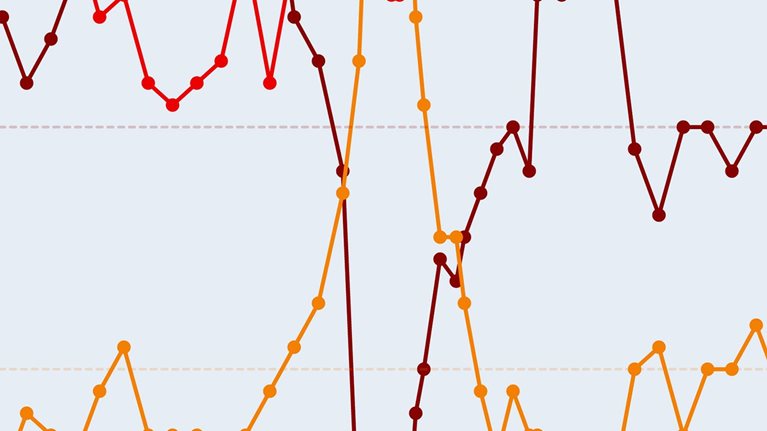In the global economy and at home, executives identify geopolitical issues as the greatest risk to growth. The concern is especially acute in Europe and North America, according to McKinsey’s latest survey on economic conditions,1 where respondents see geopolitical instability as both a short-term threat and a long-term problem. Even so, their overall economic outlook has brightened in the three months since our last survey.2 Developed-market executives are more upbeat about the state of the economy than their emerging-market peers, yet more conservative in their expectations for China’s growth prospects—about which executives in China are the most bullish.
Read more about Employment & Growth
The return of geopolitical risks
Concerns over volatility arose in our previous survey on economic conditions, as a potential risk to global economic growth. Now, however, executives’ worries over geopolitical instability have risen (Exhibit 1). The concern is greatest among respondents in Europe, 87 percent of whom—up from 68 percent three months ago—cite geopolitical instability as a risk. Meanwhile, in China, economic volatility remains an outsize risk: 41 percent of executives there cite it, compared with 27 percent of all other respondents.

With respect to domestic growth, geopolitical instability is identified more often as a risk—along with political issues—while volatility worries have subsided. In North America, the largest share of respondents cite transitions of political leadership as a risk to growth in their home countries (Exhibit 2). In India, executives most often cite domestic political conflicts, as they did in September. And in Europe, the largest share (44 percent, up from 31 percent three months ago) cite geopolitical issues.

Geopolitical issues are a concern over the long term, too. Clear majorities of executives—and much larger shares than one year ago—cite instability in the Middle East and North Africa, in addition to terrorism, as likely shocks to the global economy in the next decade (Exhibit 3). And in their own economies, respondents cite geopolitical instability among the top threats to growth over the next ten years. At home, low levels of innovation are also top of mind as a long-term risk. Interestingly, executives in China and in Europe are the most likely across regions to cite low levels of innovation as a risk to domestic growth in the next decade. This result from Europe suggests that historically slow investments in the region may pose significant innovation- and growth-related challenges in a few years’ time.

A balanced outlook at home and for the world
Despite the geopolitical uncertainties, executives share an overall economic outlook that’s notably less negative than it was in September. When asked about current conditions in their home economies, nearly equal shares say conditions are better, the same, and worse now than they were six months ago. In the previous survey, the largest share of respondents (41 percent) said conditions had worsened.
As in September, executives in Latin America and China remain the most downbeat across regions.3 In fact, respondents in Latin America have been the glummest about their home economies for the ninth survey in a row—not surprising, since countries across the continent are dealing with political conflicts (which executives there cite as a top risk to domestic growth), inflation, recession, volatile exchange rates, shrinking demand, and falling prices for commodities, including oil. Indeed, when asked about future oil prices, 78 percent of all respondents (and 84 percent in Latin America) expect the price per barrel will be $60 or less in the next year.4 But looking ahead, executives’ views are more positive than negative: 37 percent of all respondents predict conditions at home will improve in the next six months, and 24 percent expect they will get worse.
On the world economy, executives are especially bullish—at least, compared with three months ago. In September, 62 percent of executives said global conditions had declined. Now, about one-third of respondents say global conditions have either improved, stayed the same, or gotten worse in the past six months. Their outlook has tempered, too. Even respondents in Latin America are more upbeat about global conditions than in September (Exhibit 4).

At the same time, respondents in developed markets report diverging views from those in emerging markets, who have been more downbeat over domestic conditions in every survey this year (Exhibit 5). Developed-market executives are more than twice as likely as their peers to say domestic conditions have improved in the past six months. One year ago, nearly equal shares of executives (41 percent in developed markets and 40 percent in emerging markets) believed that domestic conditions had improved.

They differ, too, in their views of the global economy. Developing-market executives are much likelier than their peers (35 percent, compared with 21 percent) to say the global economy is better now than six months ago. Both groups, though, are equally likely to expect conditions will improve in the next six months.
Mixed views on China
China’s leaders recently announced early targets for the country’s 13th five-year plan, and we asked executives about their expectations for near- and longer-term growth there. On the whole, respondents are skeptical. Proposals for the five-year plan call for at least 6.5 percent growth per year, from 2016 to 2020. But roughly half of all executives say it’s very or somewhat unlikely that China will meet these targets in the next few years. When asked about expected growth in 2016, more than half of respondents predict the rate of growth will be 5 percent or less—and that China will fall short of the 6.5 percent target.
Here, too, developed-market and emerging-market respondents are divided (Exhibit 6), though there are notable regional differences. While executives in developed markets are more cautious overall about China’s growth, those in India have the most conservative expectations: more than two-thirds of respondents in India expect China’s GDP will miss the government’s target.

Executives in China, by contrast, are the most bullish. Sixty-two percent of respondents there predict China’s GDP will grow between 6 and 7 percent in 2016; only one-third of all others say the same. The same share in China believe the plan’s targets will likely be met in coming years, compared with 35 percent of all other respondents.


